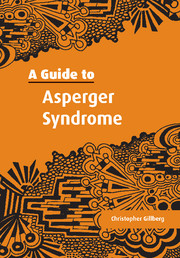Book contents
- Frontmatter
- Contents
- Preface
- 1 Introduction
- 2 Definitions
- 3 Prevalence
- 4 Symptoms in childhood
- 5 Symptoms in adolescence
- 6 Associated psychiatric and social problems
- 7 Other problems
- 8 Strengths
- 9 Background factors
- 10 Cognitive neuropsychology
- 11 Diagnosis and work-up
- 12 Outcome in the longer term: adults with Asperger syndrome
- 13 Attitudes, interventions and treatment
- 14 Who can help?
- 15 What about all those famous geniuses?
- 16 Case vignettes
- Appendices
- Further reading
- Index
13 - Attitudes, interventions and treatment
Published online by Cambridge University Press: 04 September 2009
- Frontmatter
- Contents
- Preface
- 1 Introduction
- 2 Definitions
- 3 Prevalence
- 4 Symptoms in childhood
- 5 Symptoms in adolescence
- 6 Associated psychiatric and social problems
- 7 Other problems
- 8 Strengths
- 9 Background factors
- 10 Cognitive neuropsychology
- 11 Diagnosis and work-up
- 12 Outcome in the longer term: adults with Asperger syndrome
- 13 Attitudes, interventions and treatment
- 14 Who can help?
- 15 What about all those famous geniuses?
- 16 Case vignettes
- Appendices
- Further reading
- Index
Summary
The single most important intervention when it comes to improving the quality of life of individuals with Asperger syndrome and their families is the attempt to change people's attitudes, both as regards the specific problems and their nature and the people affected. Such a change of attitude cannot take place without a proper diagnosis.
It is often necessary to intervene in one way or another in the school setting or at work. This, to a considerable extent, has to do with information and spreading of knowledge about the impairments associated with Asperger syndrome. Sometimes, indeed quite often, other measures will be required. There is no general need for ‘treatment’ of the fundamental traits associated with the syndrome as such, at least not at the present stage of our knowledge. There is no ‘cure’ for the basic problems, and, once the diagnosis is made, many do not feel the need for treatment of any kind. Nevertheless, interventions that include educational and psychological support, are often extremely helpful and should always be considered once the diagnosis has been made. Psychoeducational measures, systematic training of skills, individual talks with somebody knowledgeable about Asperger syndrome, and, occasionally, medication, may all be required in individual cases.
General aspects
Respect for the individual with Asperger syndrome must always take precedence in the planning of help and treatment for people with this variant of autism spectrum disorder.
- Type
- Chapter
- Information
- A Guide to Asperger Syndrome , pp. 100 - 122Publisher: Cambridge University PressPrint publication year: 2002



